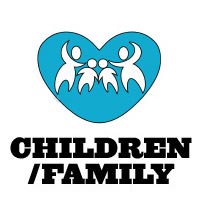 |
|
The best-crafted children's and family films usually are those that are thoroughly enjoyable without being overly sentimental, trite and simplistic, smarmy, politically-correct, and with too much child-level humor. Classic films from Hollywood's 'Golden Era' may be very appropriate for this type of film audience. Although animated films are often the genre of choice for children and families, this section will focus on non-animated films. Children's films are very often fantasy films, with wild and imaginative themes and plots that involve a journey, helpful and friendly creatures or supernatural beings, and settings in fantastic, far-away worlds. Family adventure films, such as Disney's Swiss Family Robinson (1960) are also included in this non-genre category.Family-Oriented Features: The films of child-star Shirley Temple in the 1930s and early 1940s included a few gems, Little Miss Marker (1934) and the tear-jerking The Little Princess (1939). Another timeless fantasy enjoyed perenially was the tale of a journey to Oz in The Wizard of Oz (1939).
The visually-stunning family classic by director Carroll Ballard (a directorial debut) - Black Stallion (1979) was adapted from Walter Farley's well-known children's story about the empathic friendship between a wild black horse and a young boy. [Two films followed: The Black Stallion Returns (1983) and the IMAX prequel The Young Black Stallion (2003).] The cinematographic Australian film The Man from Snowy River (1982) was a traditional, coming-of-age wild horse/boy story set in the remote outback of 1880's Australia. French director Jean-Jacques Annaud's The Bear (1988), a live-action, nearly-silent adventure film epic, told about an orphaned bear cub who was befriended by a lone, giant wounded grizzly. Annaud's Two Brothers (2004) was another animal, family-film - about twin brother tiger cubs in the exotic jungles of 1920s French Indo-China who became separated and were taken into captivity, but later were reunited.
Christmas-Themed Family Films:
Another Christmas comedy favorite, director Peter Godfrey's Christmas in Connecticut (1945) starred Barbara Stanwyck as Elizabeth Lane - a sophisticated magazine columnist who must fabricate a home-making Connecticut family for herself to match her publicity as "America's Best Cook" (a 40's Martha Stewart). And director George Seaton's holiday classic Miracle on 34th Street (1947) starred a precocious 2nd grader Susan Walker (9 year-old Natalie Wood) skeptical of Santa Claus/Kris Kringle (Edmund Gwenn) in a New York City Macy's Department Store.
Charles Dickens' story of Ebenezer Scrooge, A Christmas Carol, is the most remade film of all time, with over 60 versions. The best and most definitive of all versions was director Brian Desmond Hurst's and screenwriter Noel Langley's 1951 British version A Christmas Carol (1951) with Alastair Sim as the mean London miser. An animated Christmas favorite continues to be A Charlie Brown Christmas (1965), the first half-hour Peanuts TV special telecast in December of 1965, with the title character searching for the true meaning of Christmas, with a Christmas pageant speech about over-commercialization. Charles Dickens' tale was updated in Brian Henson's The Muppet Christmas Carol (1992) with human actor Michael Caine (as Scrooge) among the puppets. Physical comic Jim Carrey played the green and mean title role in director Ron Howard's popular Dr. Seuss' How the Grinch Stole Christmas (2000). [The original version of Seuss' tale by legendary animator Chuck Jones, was a 1966 TV show narrated by Boris Karloff as the voice of the Grinch - a creature who attempted to destroy the holiday for the Whos in Whoville.] The heart-warming modern-day classic, director Bob Clark's A Christmas Story (1983), was based on the 1940s childhood recollections of American humorist Jean Shepherd, to obtain a Red Ryder BB-gun for Christmas, with Peter Billingsley as the round, 9 year-old boy Ralphie. The slapstick National Lampoon's Christmas Vacation (1989) starred Chevy Chase as the daffy, disaster-prone head of the tasteless Griswold family, the third entry in the exhaustive yet hilarious series. Producer/production designer Tim Burton's off-beat and imaginative stop-action animated feature A Nightmare Before Christmas (1993) told the story of how the dark residents of HalloweenTown schemed to take over Christmas as their own personal holiday. Jack Skellington, the Pumpkin King, obsessed with Christmas, kidnaps Santa in ChristmasTown with plans to make Christmas scarier. TV situation-comedy actor Tim Allen in his screen debut, portrayed divorced father Scott Calvin (with initials the same as Santa Claus) and Father Christmas in the 1994 family box-office hit The Santa Clause (1994) - remade later as the sequel The Santa Clause 2 (2002). |